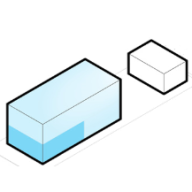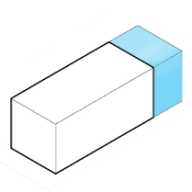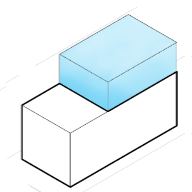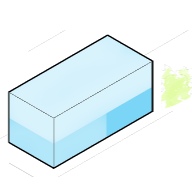Development Opportunity for
209 Glenview Dr, San Francisco, CA
527% Potential
($9,836,572 Untapped Value)
This property is a Dwelling designated as a Single Family Residential unit on a lot of 3,336 sqft. It has 1 story, 4 rooms, 1 bathroom. Property has a total as-built area of 1,769 sqft of which 888 sqft is the conditioned area assessed for property taxes.
Development Options for
209 Glenview Dr, San Francisco, CA
What are the local zoning regulations for 209 Glenview Dr ?
RH-1 (RESIDENTIAL- HOUSE, ONE FAMILY)
These Districts are occupied almost entirely by single-family houses on lots 25 feet in width, without side yards. Floor sizes and building styles vary but tend to be uniform within tracts developed in distinct time periods. Though built on separate lots, the structures have the appearance of small-scale row housing, rarely exceeding 35 feet in height. Front setbacks are common, and ground level open space is generous. In most cases the single-family character of these Districts has been maintained for a considerable time.
These districts predominantly consist of single-family houses on narrow 25-foot-wide lots, lacking side yards. Despite varying floor sizes and architectural styles, uniformity prevails within tracts developed during specific time periods, creating a small-scale row housing aesthetic with structures rarely surpassing 35 feet in height. Common features include front setbacks, providing a sense of spacing, and ample ground-level open space, fostering a visually appealing environment. Remarkably, the enduring preservation of a single-family character characterizes these districts, attesting to their long-term residential stability.
Permitted Residential Use: ADU and JADU, intermediate length occupancy use, single room occupancy, student housing, senior housing, and dwelling units.
Permitted Non-Residential Use: Agriculture, neighborhood, passive outdoor recreation, child care facility, public facilities, and residential care facility.
What is the maximum height for 209 Glenview Dr ?
40-X
No portion of a dwelling can exceed a height of 40 feet, except that the permitted height has to be reduced to 35 feet where the average ground elevation at the rear line of the lot is lower by 20 or more feet than at the front line. The height is measured by taking a point at the centerline of the building or, where the building steps in relation to a street that is the basis for height measurement. Separate points need to be taken at the centerline of each building step. The upper point is the highest point on the finished roof in the case of a flat roof, and the average height of the rise in the case of a pitched or stepped roof.
What are the ADU regulations for 209 Glenview Dr ?
ADU eligible
Accessory Dwelling Units (ADUs), also called secondary units, in-law units, or cottages, are units added to existing and new residential buildings. Adding an ADU to your property can provide several benefits, such as providing housing for family members, simplifying your lifestyle, and increased financial flexibility.Learn more about building ADU in this article
What neighborhood is 209 Glenview Dr located in?
Midtown Terrace, San Francisco
The neighborhood features mid-century modern homes arranged in rows on terraced streets, surrounded by greenbelts, forests, reservoirs, and open space.
The land occupied by Midtown Terrace (approximately 150 acres) was once part of Rancho San Miguel, a large 4,400-acre parcel originally granted in 1846 to Don Jose de Jesus Noe, the first mayor of Yerba Buena (the pre-cursor to San Francisco). The land then changed hands several times, with ownership eventually being acquired by Adolph Sutro, a prominent engineer and developer and San Francisco's mayor from 1894 to 1896. To transform its "bleak" appearance, Sutro had eucalyptus trees planted on a significant portion of his property, which eventually became Sutro Forest. After Sutro's death in 1898, family squabbles and legal battles ensued over the land. His heirs eventually sold the area to developers and the various West of Twin Peaks neighborhoods began to take shape, being built on the "City Beautiful" concept of landscaped residential parks featuring detached single family homes.




